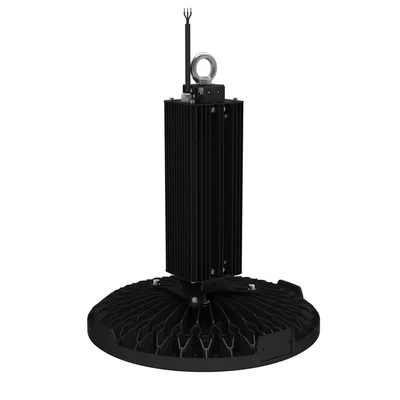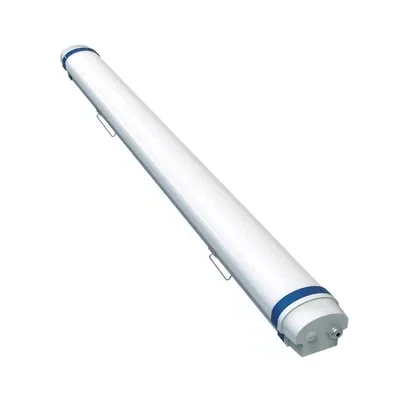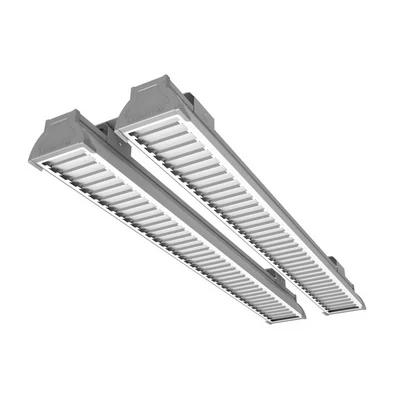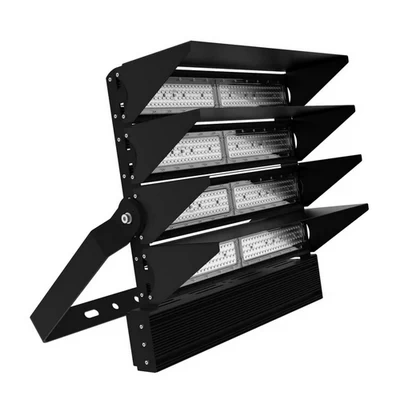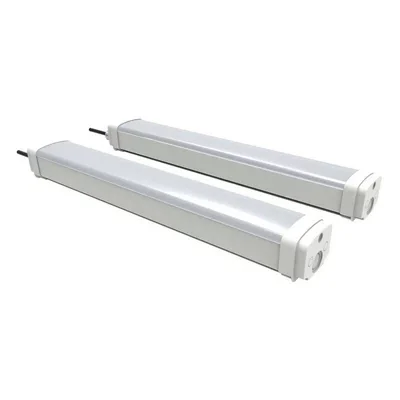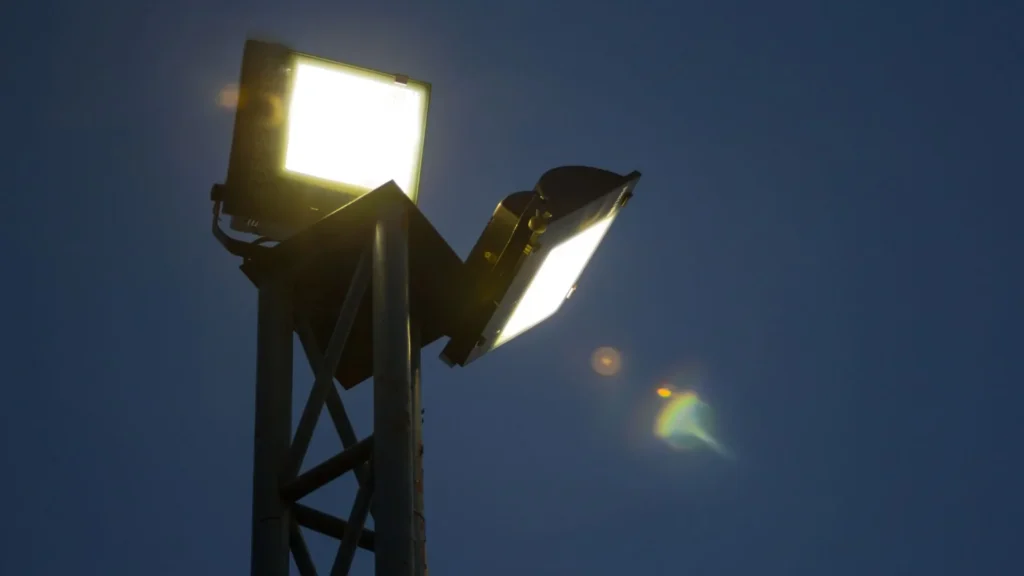Table of Contents
ToggleMotion Sensor Introduction
Motion sensor lights are smart lighting devices that use built-in infrared or microwave/radar sensors to detect human movement or object displacement, automatically turning the light on and off. These lights are widely used indoors and outdoors, and are most commonly found in modern LED motion sensor lights.
How Do Motion Sensor Lights Work
Motion sensing lights use technology that detects changes in the environment and reacts to them. Both indoor and outdoor, use sensors to detect movement or heat. When they detect something, they switch on lights. Motion detector light use two major types of sensors:
- Infrared sensors (PIR) detect heat signatures. This makes them good for low installation heights. They work well in places like offices, corridors, and underground parking.
- Microwave sensors: Emit radio waves to detect motion, ideal for large, open spaces like warehouses or streets.

Turn off light: You can adjust duration of light after it turns on. If the sensor no longer senses movement, the light will turn off.
Key Operating Principle:
Sensor (sensing movement) → Control module (analyzing signals) → Driver circuit (energized to illuminate) → LED light source (instantaneous response)
| Feature | Infrared (PIR) | Microwave |
|---|---|---|
| Sensing Distance | 5–8 meters | 12–15 meters |
| Detection Angle | 90° (side), 360° (ceiling) | 150° (side), 360° (ceiling) |
| Sensitivity | Can be blocked by dust or obstacles | Detects movement regardless of temperature or obstacles |
| Supply Voltage | 3.3V, 5V, 12V | 3.3V, 5V, 12V |
| Protection Level | IP20 / IP65 | IP20 / IP65 |
| Typical Applications | Indoor lighting, offices, garages | Outdoor lighting, warehouses, streets, large open areas |

Indoor vs Outdoor Motion Sensor Light
Indoor motion sensor lights typically require a lower detection range and may focus more on convenience. Outdoor sensor lights should be strong, weather-resistant, and have a higher sensitivity range for better security coverage. Knowing the features and needs of motion sensor security lights for indoor and outdoor use will help you decide better.
Similarities :
- Both indoor and outdoor models use dual sensors, including infrared (PIR), microwave, or a combination of both.
- Detecting human or object movement triggers the light to turn on and automatically turns off after a set period of time.
- Both reduce energy consumption and extend light life.
- They generally support AC or low-voltage DC input.
Differences :
- Outdoor motion sensors need to be able to withstand high temperatures and have high level of protection; indoors, there are no special protection requirements.
- The outdoor sensor has higher sensitivity and is adjustable, while indoor sensor has a lower sensitivity and is fixed.
- Outdoor motion sensors have wide sensing angle. Indoor motion sensors have narrower sensing angle.


| Feature | Indoor Motion Sensors | Outdoor Motion Sensors |
|---|---|---|
| Sensing Range | Short — typically 3–8 m | Longer — typically 10–20 m |
| Detection Angle | Narrow to medium (90°–180°) | Wide to full (150°–360°) |
| IP | Low — IP20–IP44 | High — commonly IP65 or above |
| Sensitivity & False Triggers | Lower sensitivity to reduce false triggers | Higher sensitivity; tuned for open environments |
| Daylight / Light Control | Often limited or optional | Common and adjustable to weather/ambient light |
| Durability / Temperature | Designed for stable indoor conditions | Built for temperature extremes, UV and corrosion resistance |
LED Motion Sensor Light


LED motion sensor lights have replaced traditional lights in most homes and commercial and industrial lighting, becoming the mainstream choice.
- Energy Saving & Long Life : LEDs offer high luminous efficacy and low power consumption. Their lifespan can reach 50,000–100,000 hours, several times longer than halogen or incandescent lamps.
- Wide Applications : Suitable for both indoor applications (corridors, stairwells, factories, warehouses) and outdoor applications (gardens, parking lots, security lighting).
- Smarter : Modern LED motion sensor lights feature features such as light-sensitive control (off during the day, automatic operation at night), sensitivity adjustment, and timer delays. They can also be controlled via Wi-Fi or Zigbee.
- Market Trends : Due to their energy-saving and environmentally friendly nature, many countries have phased out traditional light sources, and LED motion sensor lights are gradually gaining popularity.
Ledrhythm is a Chinese manufacturer of industrial and commercial LED lighting, offering wide range of professional LED motion sensor light. View our all product or contact us to customize your LED lighting solution.
Installation Tips for Motion Sensor Lights
Proper installation is essential for ensuring that motion sensor lights function as intended. Here are some tips for installing motion detector lights:
- Choose the Right Height: For outdoor motion sensor lights, install the sensor high enough to cover the area you want. Make sure nothing blocks its view. Typically, this is between 6 and 10 feet above the ground.
- Avoid Obstructions: Ensure that the sensor can see clearly. Make sure that trees, walls, or other objects do not obstruct its view. This will help it detect motion better.
- Consider the Detection Angle: Position the sensor so that it covers the area where you expect the most movement. For example, place outdoor motion sensor lights near pathways, driveways, or entrances for maximum coverage.
- Test the Sensitivity: After installation, test the sensor’s sensitivity to ensure it’s detecting movement as intended. Adjust the sensitivity if necessary to avoid false alarms or missed detections.
- Weatherproof for Outdoor Use: Seal outdoor motion sensor lights properly to protect against rain and moisture. Check the IP rating to confirm that the lights are suitable for outdoor use.
Types of Motion Sensor Lights
Many types of motion sensor lights are available today. Each type serves different needs and settings. The most common include:
- Passive Infrared (PIR) Motion Sensor Lights: These are among the most widely used types of motion sensor lighting. PIR sensors detect infrared radiation. This radiation comes from humans and animals. Because of this, they work well as indoor motion sensor lights. They are also good for motion sensor light bulbs. These sensors are perfect for small, enclosed spaces like hallways, bathrooms, and offices.
- Microwave Motion Sensor Lights: These emit microwaves and measure their reflection to detect movement. They are exceptionally sensitive and can detect motion through walls and doors. This makes them great for commercial motion sensor lights. They are also useful for outdoor lights that cover large areas, like parking lots or security systems.
- Dual Technology Motion Sensors: These combine PIR and microwave sensors, offering enhanced sensitivity and reducing false alarms. They are popular in motion detection security lights where accuracy is crucial for triggering security lighting systems.
- Ultrasonic Motion Sensor Lights: These sensors detect motion by emitting high-frequency sound waves. Ultrasonic sensors are exceptionally sensitive and perfect for indoor areas. They work well for tasks that need precise detection. Examples include motion sensor light switches and night lights in offices or schools.
Each type of motion detector light has its own pros and cons. These depend on the environment and the user’s needs for security or convenience.
Conclusion
Motion sensor lights enable smarter, more energy-efficient lighting, truly turning on when someone approaches and off when they leave. LEDs combined with motion sensors are best lighting option today, making our lives and work safer and more convenient.
People Also Ask
How to turn off a motion sensor light without switch?
- Many motion-sensing lights have a knob or switch for direct adjustment.
- Turn off the power, simply unplug the light or turn off the main power cord.
- Some lights can be controlled wirelessly, allowing you to turn them off via a remote control, Wi-Fi, or app.
- If your surroundings are consistently bright, the motion sensor light will not illuminate, effectively turning it off.
How to reset motion light sensor?
- Power off and restart: Turn off the light and then back on to see if it returns to its default settings.
- Reset button: Some motion sensor lights have a dedicated reset button; press and hold for 5-10 seconds to reset.
- Restore factory settings: Some motion sensor lights support factory reset via the mobile app or remote control. Follow the instructions in the manual.
How to wire a motion sensor light?
Usually connected to the motion sensor light via mobile phone Bluetooth or WIFI.

